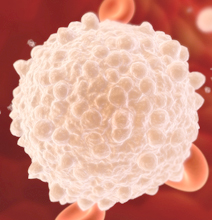Gene therapy
This idea behind this type treatment is to use genes to treat cancer.
Several strategies to accomplish this are being researched, including:
- Replacing missing or mutated genes known to be linked to malignancy, by healthy functional ones. It is known that missing some genes, such as the tumor suppressor gene p53, can trigger cancer. Inserting functional copies of these in the cancer cells might be enough to treat the disease
- Boosting the immune system’s ability to attack and destroy cancer – e.g. by introducing genes in white blood cells – a main player of the immune response against cancer - to increase these cells efficiency at recognizing and killing cancer.
- Turning cancer cells more susceptible to conventional treatments, such as chemo or radiotherapy, or the patients’ normal healthy cells more resistant. These more robust cells, once reintroduced into the body, can help improve the patient’s health and general resilience.
- Introducing “suicide” genes into the tumor cells leading to their self-destruction. E.g. genes that transform inactive drugs into their active and toxic form when the drugs enter the tumor cell
- Introducing cell-killing viruses modified to be specific for cancer cells, and innocuous to healthy/normal cells
But how are these laboratory-manufactured genes put into cells?
Traditionally, new genes are inserted into cells using vectors – usually viruses - as vehicles. This takes advantage of the fact that when viruses infect cells they insert their DNA into the attacked cell’s DNA. The artificial gene(s) is first inserted inside the viral DNA, and the modified virus is used to infect the cells we want to alter. As these cells become infected, their DNA acquires both viral DNA and lab-made genes. Crucially, the viruses used as vectors are altered so they cannot cause serious disease, at most only some mild flu-like symptoms.
Recently, however, there have been major advances in gene therapy. First, a breakthrough new technology called CRISPR was developed for genetic manipulation. CRISPR is now the most simple, versatile and precise method of genetic manipulation available, and is expected to quickly replace more traditional methods. In July 2017, in another milestone, the American Food and Drug Administration (FDA) started the process to approve the first ever commercialization of a genetic therapy against cancer. The treatment engineers the patient’s own white blood cells to recognize and attack his/her cancer cells, and will be used to treat young adults and children with advanced aggressive leukemia. In clinical trials the treatment achieved, after only 3 months, complete or partial remission of 83% of patients resistant to chemotherapy.





